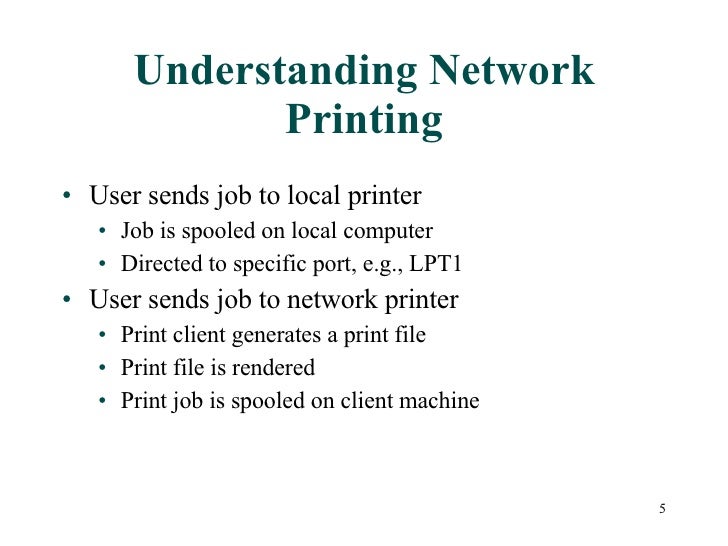- Hp Extraction Failed Cannot Delete Output File
- Hp Driver Install Cannot Delete Output Files
- Cannot Create Output File

To complete the uninstall, remove the printer and any Windows print drivers from the Windows Devices and Printers list. Make sure the printer is turned on and in a ready state. If your printer connects to the computer with a USB cable, disconnect the cable from the printer. It is possible that you do not have admin permissions when trying to install anything or there are special restrictions on the notebook. You may want to verify that with them. Realistically, I believe this error message is saying that it cannot extract the streamer file needed to run.
So, after some attempt, I have removed the device. Now I can't reinstall in any way: I have uninstalled all HP software, removed all drivers, emty the spooler, downloader the latest driver, read all post in this forum. The problem is always the same: the installer starts, when it ask to connect the printer, the installation continue endlessly. If this does not complete the installation, or you do not have the CD, access the HP help files by clicking the Start menu. Here is the text from the HP All-In-One Driver Software Installer: Printer setup has failed to complete. Click Retry to try installing the printer again or click Next to continue installation without connecting to the. So, after some attempt, I have removed the device. Now I can't reinstall in any way: I have uninstalled all HP software, removed all drivers, emty the spooler, downloader the latest driver, read all post in this forum. The problem is always the same: the installer starts, when it ask to connect the printer, the installation continue endlessly.
This article helps to fix an issue in which Windows 10 doesn't install specific drivers for USB audio devices on the first connection.
Original product version: Windows 10, version 1703
Original KB number: 4021854
Symptom
When you connect a USB audio device to a Windows 10 Version 1703-based computer the first time, the operating system detects the device but loads the standard USB audio 2.0 driver (usbaudio2.sys) instead of the specific device driver.
Cause
This issue occurs because the USB audio 2.0 driver (usbaudio2.sys) isn't classified as a generic driver in Windows 10 Version 1703. Therefore, the system assumes that a compatible, nongeneric driver is installed for the device even though the driver is generic.
This issue also causes Windows 10 Version 1703 to postpone the search for other compatible drivers through Windows Update that typically occurs immediately after you install a new device.
Resolution
To fix this issue, use one of the following methods.
Method 1
To resolve this issue, install update 4022716.
Method 2
If the device-specific driver is distributed through Windows Update, you can manually update the driver by using Device Manager. For more information about how to do this, see update drivers in Windows 10.
Method 3
If the device is not yet connected, first install the device-specific driver, such as by using the appropriate installer. After the device-specific driver is installed, Windows 10 will select that driver instead of the standard USB audio 2.0 driver when you first connect the device.
Note
See the device manufacturer's user guide for specific instructions about how to install the driver.
Method 4
If the driver isn't distributed through Windows Update, you can manually reinstall the driver. To do this, follow these steps:
- Install the device-specific driver (see Method 2).
- Open Device Manager.
- Right-click (or tap and hold) the name of the device, and then select Uninstall.
- Restart the computer.
When it restarts, Windows will try to reinstall the device by using the device-specific driver.
You can try to use Command Prompt to delete files that cannot be deleted in Windows 10
1. You can press Windows + R keys on the keyboard, type cmd, and press Ctrl + Shift + Enter to run Windows Command Prompt as administrator.
2. Then input the command line del /f filename and hit Enter to force delete the file in Windows 10 with CMD.

How to Force Delete a File That Cannot Be Deleted Windows 10
If you can't delete files, you can follow these solutions below to delete files:
Why Can't I Delete the File on Windows 10/8/7
Sometimes you might encounter a folder that you're unable to delete. If you want to fix this problem, you must know the reason first. Generally, the file is used or locked would be the main reason. Otherwise, a virus must be taken into account.
It's most likely because another program is currently trying to use the file. This can occur even if you don't see any programs running. When a file is open by another app or process, Windows 10 puts the file into a locked state, and you can't delete, modify, or move it to another location. Usually, after the file is no longer in use, the application will unlock it automatically, but that's not always the case. Sometimes, a file may not unlock successfully, and even if you try to take any action, you'll see a warning that the operation can't be completed because it's open by another program.
Also read:How to fix 100 disk usage in Task Manager
Before you take actions to delete the undeletable files, you can first try these simple tips and delete these files:
- Close all the programs.
- Restart your computer.
- Let the antivirus scan your computer to see if there's a virus on your computer and get rid of it.
If these files still exist, the following methods would do a favor to you.
Method 1. Force to Delete a File That Cannot Be Deleted Windows 10
Files cannot be deleted if the file is open in an application. Usually, you could receive the information when you can't delete a file like the picture showing below.
To force Windows 10 delete a file, you can follow the steps below:
Step 1. Go to Start, type Task Manager, and choose 'Task Manager' to open it.
Step 2. Find the application that is currently using the file, and select 'End task'.
Step 3. Then, try to delete the file again on your Windows PC.

Method 2. Delete the file/folder with Command Prompt
Using Command Prompt for deletion is sometimes more efficient, and you definitely should give it a try. Here’s what you need to do to delete a certain file or folder with Command Prompt:
Step 1. Press the 'Windows key + R' and type cmd to open the Command Prompt or just search for Command Prompt at the start.
Step 2. In the Command Prompt, enter del and location of folder or file you want to delete, and press 'Enter' (for example del c:usersJohnDoeDesktoptext.txt).
Method 3. Enter Safe Mode to unlock and delete files
Usually, when you come across a locked file, you can simply restart your device to unlock it. If it doesn't work, you can boot into Safe Mode to unlock and delete the file.
Step 1. Open 'Settings' > Click on 'Update & Security' > Click on 'Recovery' > Under 'Advanced Startup', click the 'Restart now' button.
Step 2. Click on 'Troubleshoot' > 'Advanced options' > 'Startup Settings'.
Step 3. Click the 'Restart' button.
Step 4. On 'Startup Settings,' press F4 to enable Safe Mode.
While in Safe Mode, use File Explorer to locate and delete the files that were previously locked, then simply restart your device as you would normally to exit Safe Mode.
Method 4. Using a third-party tool
There are many third-party applications that can help you with this problem and delete locked files. One tool that might help you with this problem is EaseUS Partition Master.
It can help to clean up junk files and wipe the whole data. It's fully compatible with Windows 10/8/7 etc. Free download this software and start deleting undeletable files now.
- Tip
- Before we delete the undeletable files by wiping the whole partition, you must backup other useful files in advance. Once you start the erasing process, you can't be canceled it until it is finished. Do remember to check the folders again to avoid data loss.
Step 1: Launch EaseUS Partition Master, right-click the partition you want to erase data from, and choose 'Wipe Data'.
Step 2: In the new window, set the time for which you want to wipe your partition, then click 'OK'.
Step 3: Click the 'Execute Operation' button in the top-right corner, check the changes, then click 'Apply' to wipe the data on your partition.
Hp Extraction Failed Cannot Delete Output File

It's important to note that unlocking and deleting files on Windows 10 may cause system and program issues, depending on the type of files you're trying to unlock. So be careful of what you delete if you're not sure of the consequences. If you have some alternate solution to this problem, and you'd like to share it with us, please tell us, our readers would love to read it.
Bonus Tips - How to Recover Deleted Files or Folders
There are times you mistakenly deleted a needed file on your Windows 10, 8.1, 8, 7 computers, we also provide you with additional help. You can recover deleted files with easy-to-use data recovery software. EaseUS Data Recovery Wizard is my recommendation. It is the best file recovery software that allows you to:
Hp Driver Install Cannot Delete Output Files
- Restore data from internal and external hard drives, SSD, USB flash drive, SD card, etc.
- Retrieve lost videos, photos, Word files, music, and more.
- Repair corrupt/damaged photos, and repair MP4/MOV files.
- Download and install EaseUS Data Recovery Wizard on your computer and follow the operations below to recover deleted files.
Step 1. Select a location and start scanning.
Launch EaseUS Data Recovery Wizard, hover on the partition, external hard drive, USB, or memory card where you want to perform erased data recovery, and then click 'Scan'.
Step 2. Select the files you want to recover.
When the scanning has finished, select the deleted files you want to recover. Double-click the file to preview its content if you need to.
Step 3. Recover lost data.
After choosing the data, click 'Recover' and choose a location on another drive to save the deleted data.
How to Delete Files that Cannot Be Deleted FAQs
As for how to delete files that cannot be deleted on Windows 10, hope the above solutions can help. If you still have problems, read the following questions and answers.
How do you force delete a file?
- To do this, start by opening the Start menu (Windows key), typing run, and hitting Enter.
- In the dialogue that appears, type cmd and hit Enter again.
- With the command prompt open, enter del /f filename, where filename is the name of the file or files (you can specify multiple files using commas) you want to delete.
Can't delete a file is open in the system?
To Overcome the 'File in Use' Error:
- Close the Program. Let's start with the obvious.
- Reboot your computer.
- End the Application via the Task Manager.
- Change File Explorer Process Settings.
- Disable the File Explorer Preview Pane.
- Force Delete the File in Use via the Command Prompt.
How do I end a DLL process?
- Go and find the 'Search' button in the 'Start' menu. You should search 'All files and folders'.
- Then type the name of that DLL file you want to stop running into the search dialog box.
- Locate the DLL file and write down the full file path for the DLL file.

Can I delete Aow_drv?
Cannot Create Output File
No. No matter how much you try but you cannot delete aow_drv. It is a log file and you cannot delete this file.
